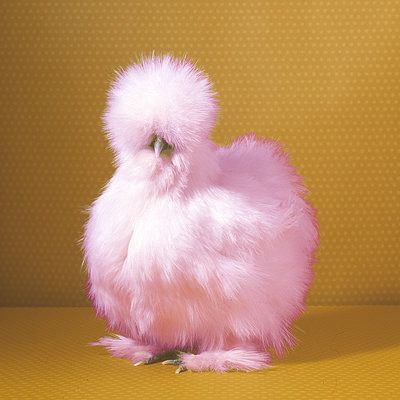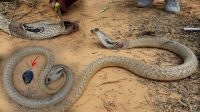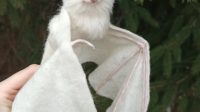Weighing approximately 100 grams, the pink fairy armadillo, scientifically known as Chlamyphorus truncatus or Pichiciego, holds the title of the world’s smallest armadillo species. Found in Argentina, this creature boasts a diminutive length of about 15 cm (6 inches). Mariella Superina, a researcher from the CONICET research center in Mendoza, Argentina, notes that the armadillo is adorned with soft, silky white hair. Its outer shell, rich in blood vessels, has the unique ability to turn pink.

This protective armor along the pink fairy armadillo’s spine is referred to as a carapace, similar to the exoskeleton of turtles and crustaceans. This defensive shield serves as the armadillo’s primary defense against predators. In the face of danger, it can swiftly burrow underground and utilize its armor plate to seal the entrance to its burrow, enhancing its security.

Despite their small size, there’s much that remains mysterious about the biology of pink fairy armadillos. These creatures are exclusive to a dry, sandy region of Argentina and predominantly dwell underground, making them elusive to spot. Consequently, Superina and her team find it challenging to determine if the species is endangered. Superina leads an international group of experts evaluating the extinction risk not only for armadillos but also their relatives like sloths and anteaters.

Despite a decade of fieldwork, Superina has yet to catch sight of a pink fairy armadillo in its natural habitat. Tracks made by its digging claws are the most she has encountered, disappearing after a few meters—likely where the armadillo burrows. She’s managed to observe the diamond-shaped tip of its tail. Unlike most other armadillos, the pink fairy armadillo’s carapace can be partially raised and is covered in fur underneath.

Locals excel at tracking animals, but these armadillos prove to be a challenge. Infrequently, individuals capture these creatures, but they struggle to keep them alive. Captive specimens often survive for a mere eight days.

Superina faced difficulties caring for a stray armadillo that couldn’t be released. Pink fairy armadillos consume ants, larvae, worms, snails, insects, and even plant matter when necessary. However, this particular one wouldn’t eat anything. Eventually, Superina found a mixture suitable for another species that this armadillo accepted. But the next stray wouldn’t consume the same food. She advises against keeping them as pets.
Infrared cameras captured the movements of a tolerant armadillo that lived in Superina’s home terrarium. The footage reveals it digging, compacting sand with its rear plate—a unique behavior of fairy armadillos. This behavior challenges the previous belief that they “swim” through sand. The video showcases the pale, furry body digging and compacting, shedding light on the distinctive traits of fairy armadillos.
Fluffy chicks Famous for their soft, cuddly appearance are favorites among poultry enthusiasts:

Fluffy chickens possess a charming and delightful demeanor that can infuse any backyard or farm with a touch of whimsical appeal. Renowned for their soft, cuddly appearance and feathers, these chickens are a favorite among poultry enthusiasts.

Diverse breeds fall under the category of fluffy chickens, including Silkie, Frizzle, and Polish breeds. Each breed boasts distinct characteristics that set them apart. For instance, Silkie chickens possess black skin, blue earlobes, and feathers with a silky texture. Frizzle chickens showcase outward-curled feathers, giving them a distinct and fluffy allure. Polish chickens sport a unique crest of feathers atop their heads, making them readily identifiable.

One of the standout features of fluffy chickens is their gentle and friendly nature. They make wonderful pets for families, especially those with children who relish cuddling and interacting with animals. Moreover, their unique and eye-catching appearance makes them excellent candidates for show birds.

Another advantage of raising fluffy chickens is their relatively straightforward care requirements. A clean, dry and secure coop for nighttime roosting, along with consistent access to food and water throughout the day, suffices. Their low-maintenance demeanor means they don’t demand excessive attention beyond the essentials.

Although not prolific egg layers, fluffy chickens do produce small to medium-sized eggs. Their fluffy plumage deters flying or escaping enclosures, a valuable trait for many owners.

In conclusion, fluffy chickens possess a captivating and endearing demeanor, rendering them exceptional choices as pets or show birds. Their gentle nature, combined with ease of care, makes them ideal for novice poultry keepers. If you’re seeking a distinctive and visually appealing addition to your farm or backyard, consider introducing some fluffy chickens to your flock.








